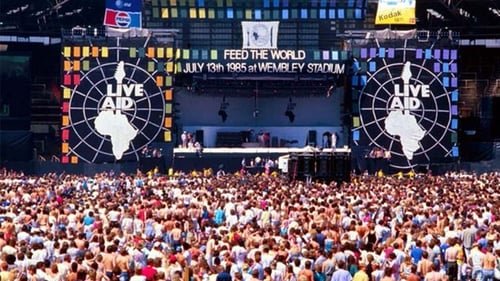
Gallery — How Live Aid Shook the Planet and Redefined Music History 40 Years Ago…Read More…
Forty years ago, on a sun-drenched July day in 1985, the world stood still — not for war, politics, or tragedy — but for music. On that day, Live Aid erupted onto the global stage, forever etching its legacy as not just a concert, but a seismic cultural phenomenon that rocked the planet and redefined the power of music.
Today, four decades later, we look back through rare images and untold stories of the iconic event that transformed stadiums into global stages and turned rockstars into ambassadors of hope. This gallery celebrates how Live Aid became the heartbeat of a generation — and why its echo still reverberates in the world of music and humanitarian efforts.
The Birth of a Global Music Revolution
The idea was born in the heart of Bob Geldof, frontman of The Boomtown Rats, after witnessing the devastating Ethiopian famine of 1984. Moved beyond words, Geldof envisioned a concert unlike any before — a mammoth event that would unite artists across continents to raise funds and awareness for famine relief. What seemed impossible quickly became a reality, fueled by Geldof’s relentless determination and the star power of the world’s biggest artists.
On July 13, 1985, Live Aid took over London’s Wembley Stadium and Philadelphia’s JFK Stadium in a synchronized, transatlantic concert broadcast live to over 1.5 billion viewers across 150 nations — a staggering one-third of the world’s population at the time.
Wembley Stadium: The Heartbeat of Hope
Wembley opened with Prince Charles and Princess Diana introducing the first act, setting a royal seal on the day’s significance. Status Quo kicked things off with their electrifying rendition of “Rockin’ All Over the World,” a fitting anthem for a show of global unity.
Yet, it was Queen’s 20-minute performance that would become the stuff of legends. With Freddie Mercury commanding the stage, Wembley became a sea of clapping hands and united voices during “Radio Ga Ga” and “We Are the Champions.” Queen’s set is still hailed as one of the greatest live performances in rock history — a reminder of music’s power to unify and inspire.
Other unforgettable moments included U2’s Bono leaping off the stage to dance with a fan during “Bad,” and David Bowie’s powerful set that included “Heroes,” a song that resonated with a deeper meaning that day.
Across the Atlantic: Philadelphia Roars
Meanwhile, Philadelphia’s JFK Stadium echoed with the voices of legends. Joan Baez opened with “Amazing Grace,” invoking a prayerful start. Soon after, music giants like Eric Clapton, Led Zeppelin (reunited for the occasion), and Madonna — then ascending to pop royalty — took the stage.
One of the defining moments came when Mick Jagger and Tina Turner performed a fiery duet of “State of Shock” and “It’s Only Rock ‘n Roll,” culminating with a playful on-stage moment that would become headline news. Bob Dylan, alongside Keith Richards and Ronnie Wood, delivered a memorable, if impromptu, acoustic set that captured the raw spirit of the event.
The Global Broadcast: A Technological and Emotional Triumph
Coordinating simultaneous concerts across continents with live satellite broadcasts in 1985 was a Herculean feat of logistics and technology. Yet, against all odds, the event unfolded with near perfection. Families in Africa, Europe, Asia, and the Americas watched the same music, sang the same songs, and shared the same hope.
It wasn’t just about the music. The broadcast interlaced performances with heart-wrenching footage from Ethiopia — images that moved millions to pick up the phone and donate. By the end of the event, Live Aid had raised over $125 million for famine relief, with pledges pouring in for weeks after.
The Aftershock: A New Era for Music and Charity
Live Aid was more than a concert; it was a global awakening. It proved that music could transcend borders, languages, and politics. The success of Live Aid directly influenced future charity mega-events, such as 2005’s Live 8, also spearheaded by Geldof, and countless benefit concerts that followed.
It also reshaped the social role of artists. Musicians became more than entertainers — they became advocates, humanitarians, and spokespeople for global causes. The idea that a guitar and microphone could change the world was no longer a fantasy — it was a reality witnessed by billions.
A Legacy That Still Resonates
As we flip through the gallery of images — Freddie’s fist in the air, Bono reaching for the crowd, Bob Geldof on the phone pleading for donations — we’re reminded of a moment when the world came together, not in grief or conflict, but in hope and humanity.
Live Aid didn’t end world hunger, nor did it erase the world’s troubles. But it cracked open the possibility of global unity through music and set a precedent that still inspires artists and activists today.
Forty years on, Live Aid stands not just as a memory, but as a challenge — a call to believe in the power of collective action and the unifying language of music. The images from that historic day continue to remind us that, even amid the world’s darkest hours, a song can ignite a movement — and a concert can shake the world.
Leave a Reply